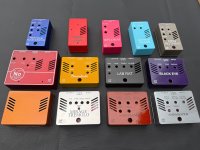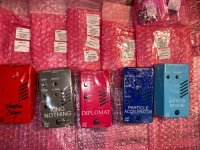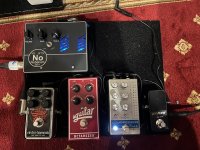You're missing the 6k8 and trimpot before you hit the transformer, but otherwise looks good. The 6k8 inline with the signal is in the original, the trimpot was my addition because I don't like the idea of a fixed level output on a preamp and have heard some people complain the original's output is too hot.
View attachment 65135
I have a few technical questions related to the circuit, I would like to address on this forum.
I have built my own replica of the Nobel, I used this circuit diagram, similar to Nobelium power supply circuit powered by 555 and Jensen output transformer. The preamp works well, but after playing through it for several days and comparing the sound (subjective) to reviews of Nobel and Nobelium on Youtube, I conclude that there are some sound differences (even though they seem minor). In my case, as well as in cases with Nobelium, the adjustment of Treble works in slightly different way: there is much more treble when cranking the level up, also it seem to affect higher range of treble which is less interesting for bass guitar, at least for me.
Another noticeable difference is slightly more compression and "omph" on the bottom end. One can say, the bass is a little more 3-dimensional, this is what I hear at least. Sounds like there is some slight phase shift on the bottom end.
It is interesting that the sonic performance of my preamp is nearly identical to Nobelium, which makes me think there might be some circuit differences between the actual Nobel and the circuit above. Another explanation could be the influence of component manufacturers, physical board arrangement or the effect of plate power supply - Noble is using linear rectifier while circuit above - PWM with simple filtering - one 10 uF cap. I would most likely believe the sound difference is due to either differences in the circuit or the PSU, which can affect the sound quite noticeably as well.
Has anyone had a possibility to verify the circuit and compare in to the actual Nobel? Especially the parts of the tone stack, plate voltages, cathode voltages?
Does anyone have access to detailed pictures of the boards of the Nobel?
Thanks!




